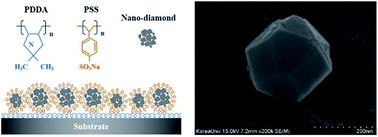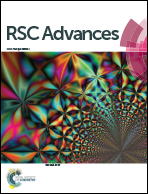Improved electrode durability using a boron-doped diamond catalyst support for proton exchange membrane fuel cells
Abstract
The durability of a fuel cell electrode was improved by using a boron-doped diamond (BDD) electrode support. BDD nanoparticles were synthesized by a size-controllable electrostatic self-assembly method (ESA). Moreover, the morphological changes as a function of operating time were investigated to prove the durability enhancement. First, diamond seeds were formed by an ESA method. The BDDs were then synthesized around these seeds by a conventional hot-filament chemical vapor deposition process. A Pt catalyst was then deposited by the polyol method, and it was characterized by scanning electron microscopy and transmission electron microscopy. The supporting BDD particles were 100–200 nm in size, whereas the Pt catalyst particles were 2–4 nm. Multiwalled carbon nanotubes (MWCNTs) and a conventional supporting material (Vulcan XC-72) were also studied for comparison. The electrochemical characteristics were examined by cyclic voltammetry and unit cell tests. The BDD support showed a larger surface area and better performance than the MWCNT and Vulcan XC-72 supports. According to the accelerated long-term stability tests, the BDD support material was more stable than the MWCNT and Vulcan XC-72 supports. These results show that BDD supports improve the durability of the fuel cell electrode.


 Please wait while we load your content...
Please wait while we load your content...